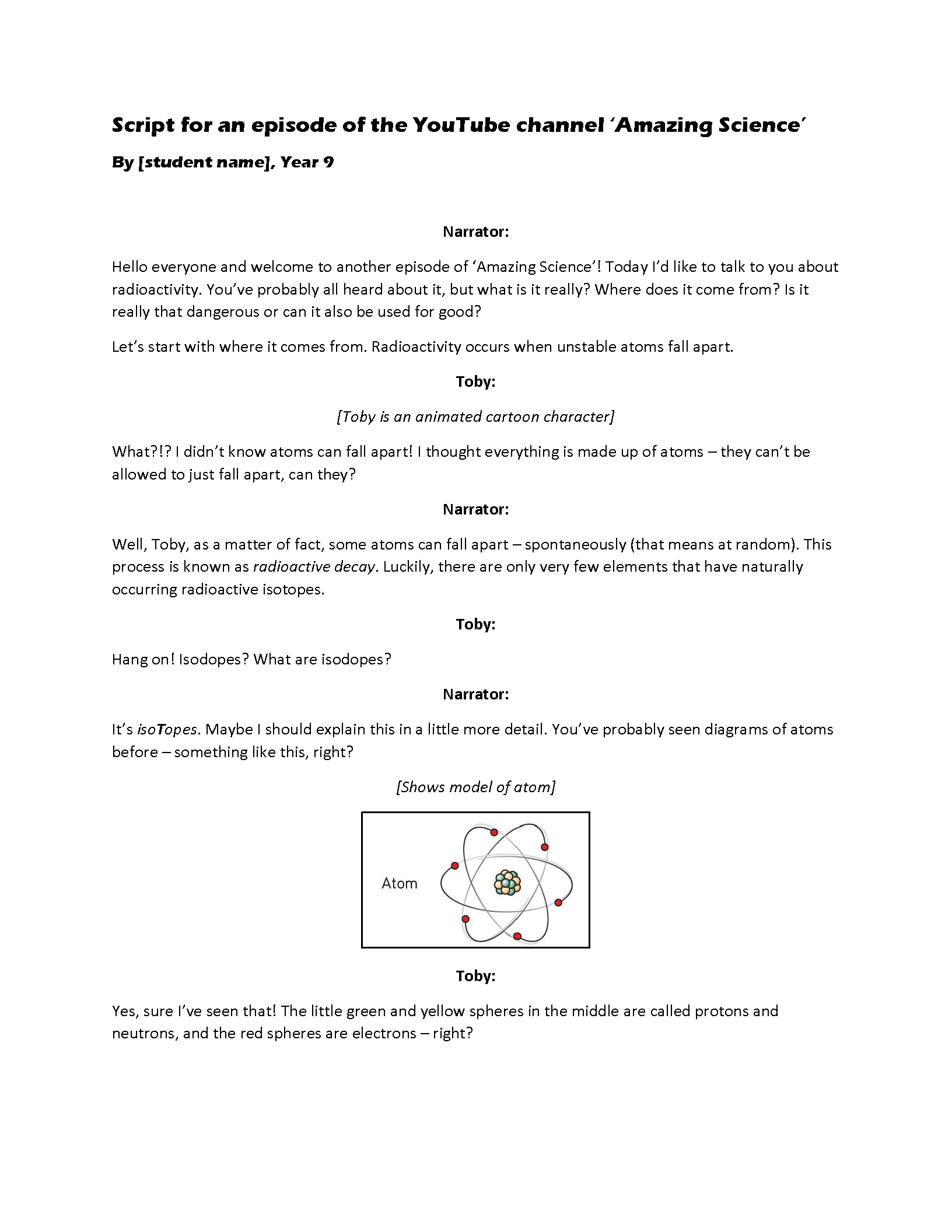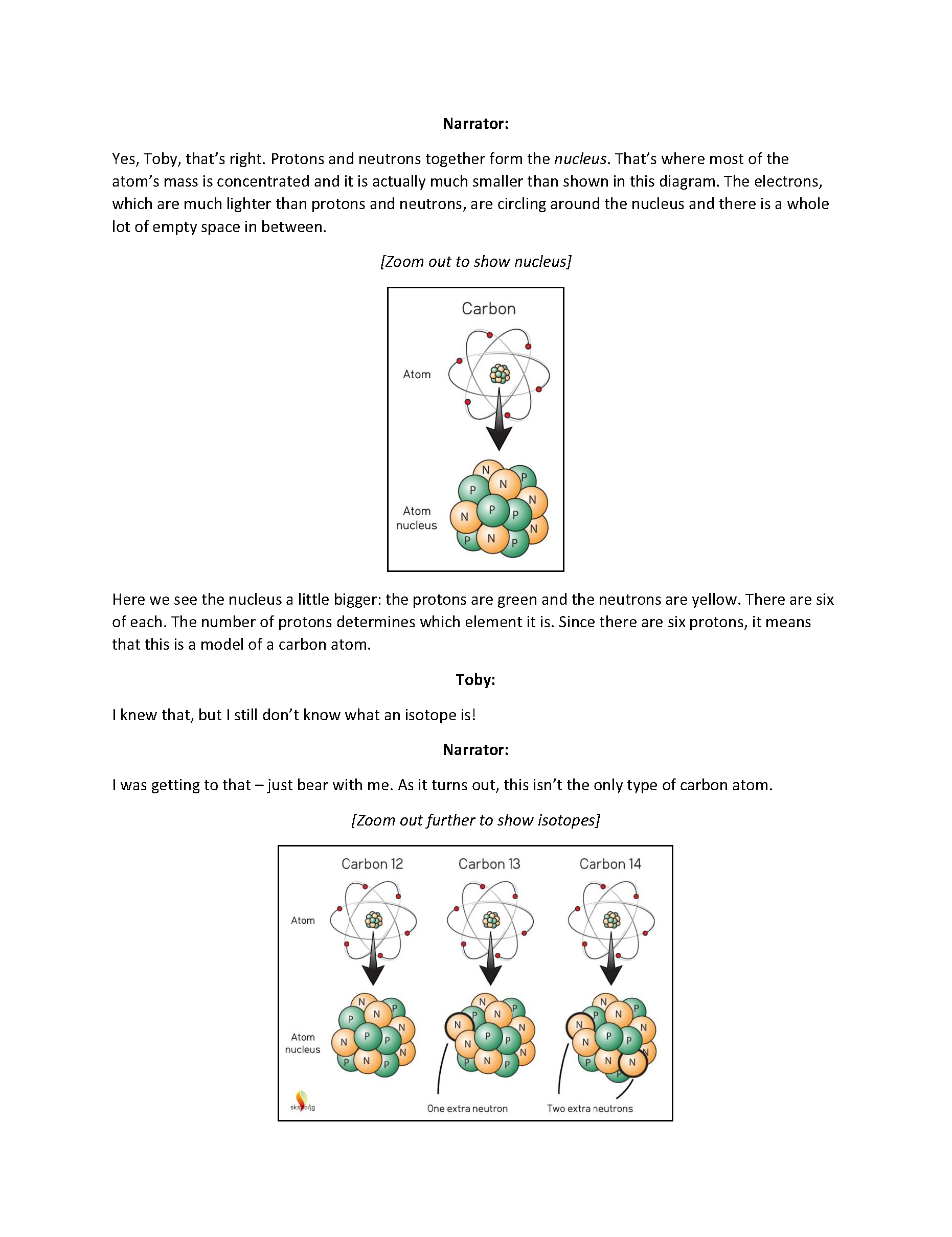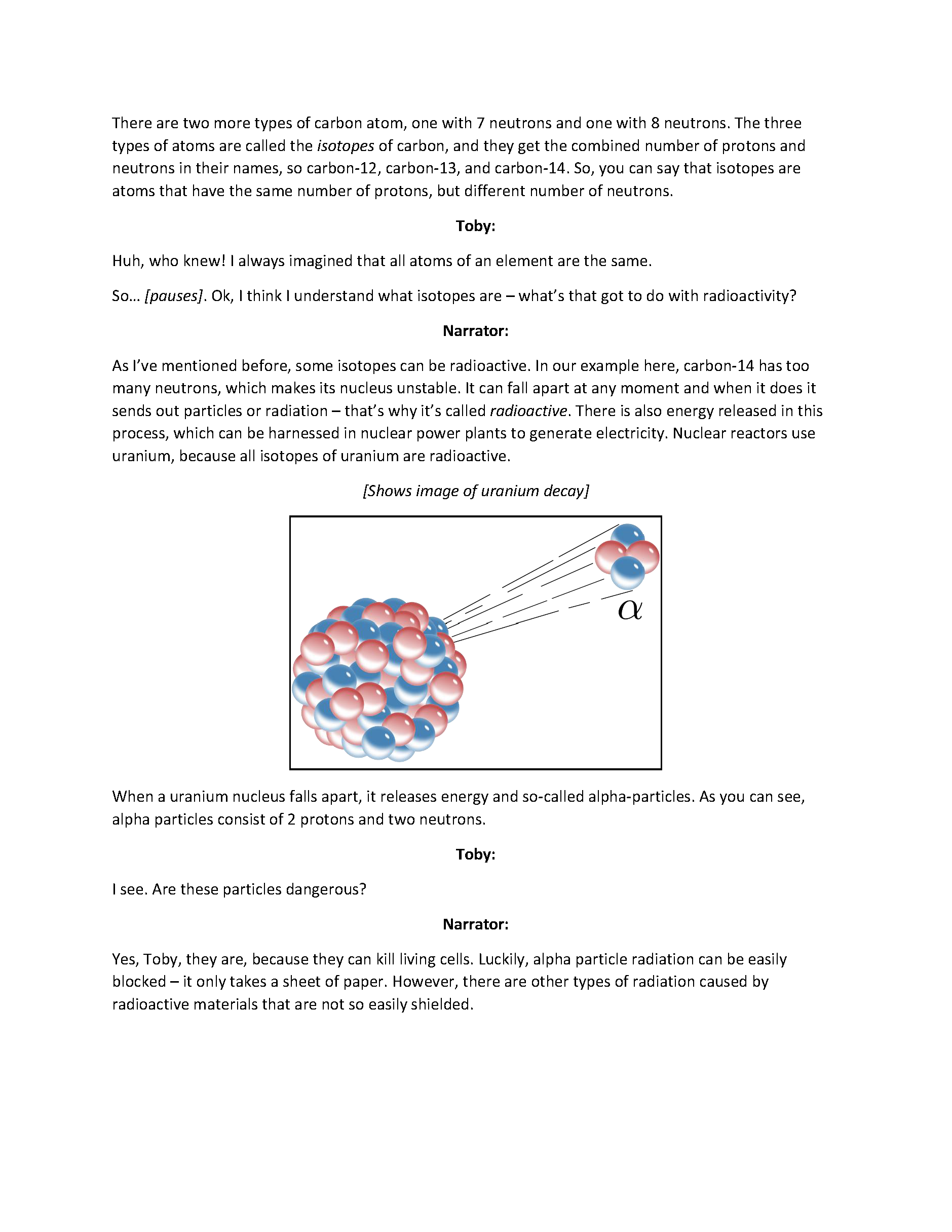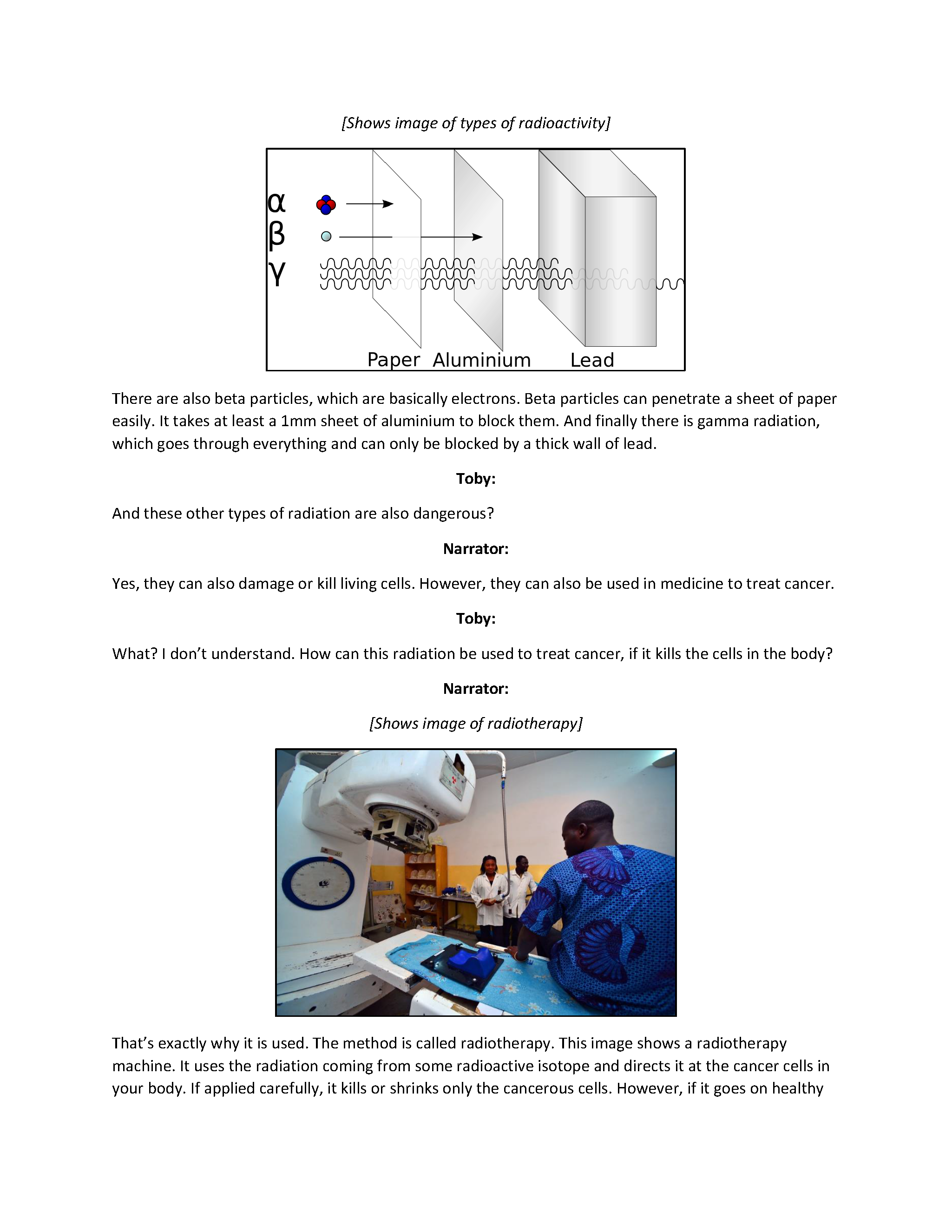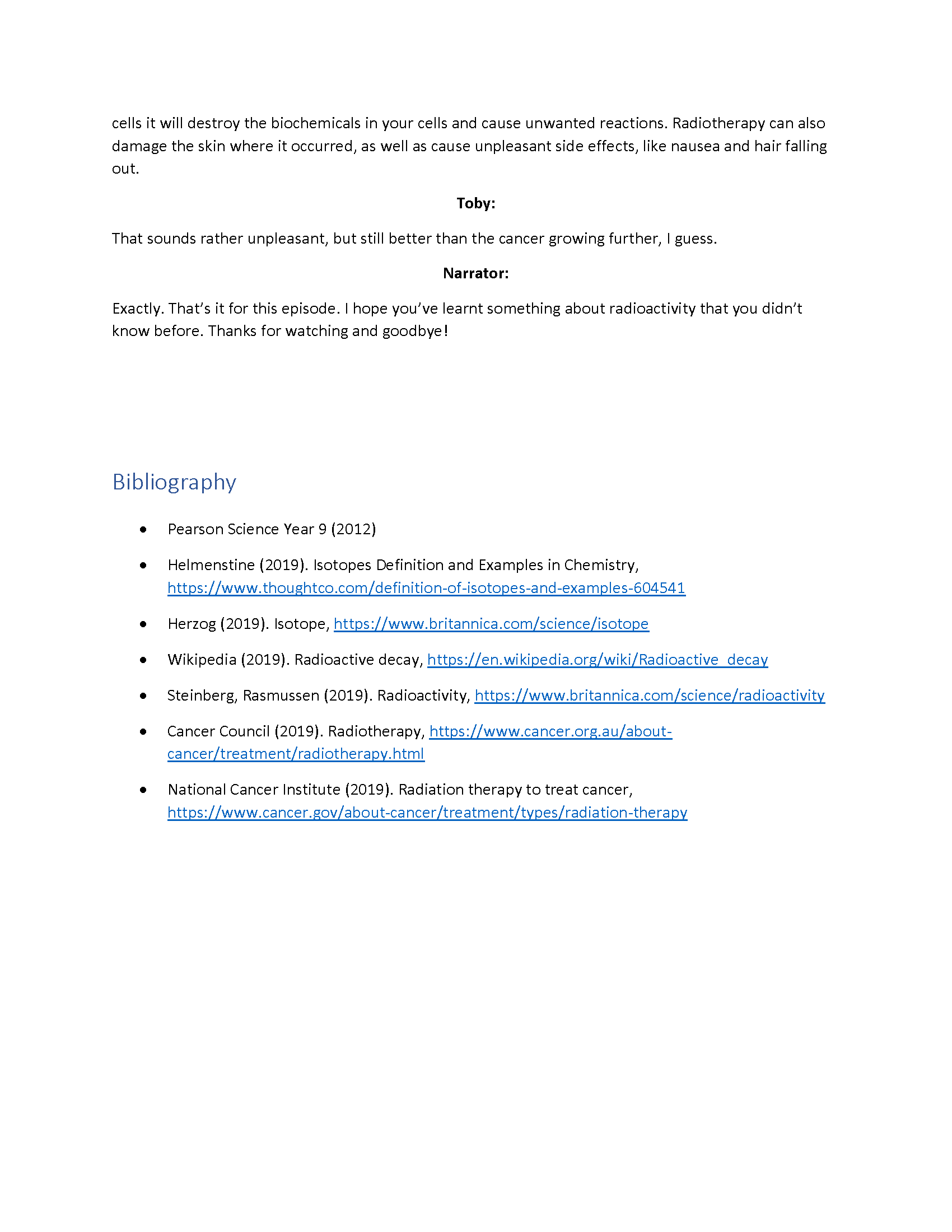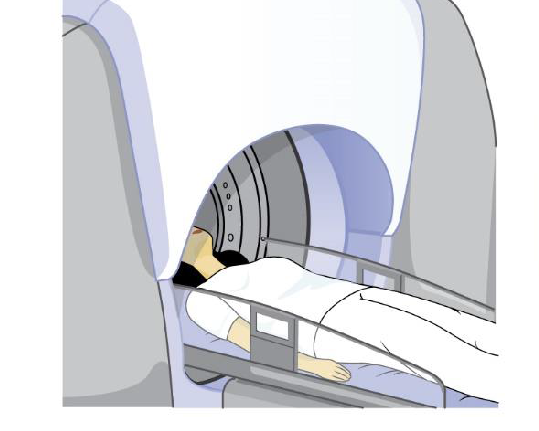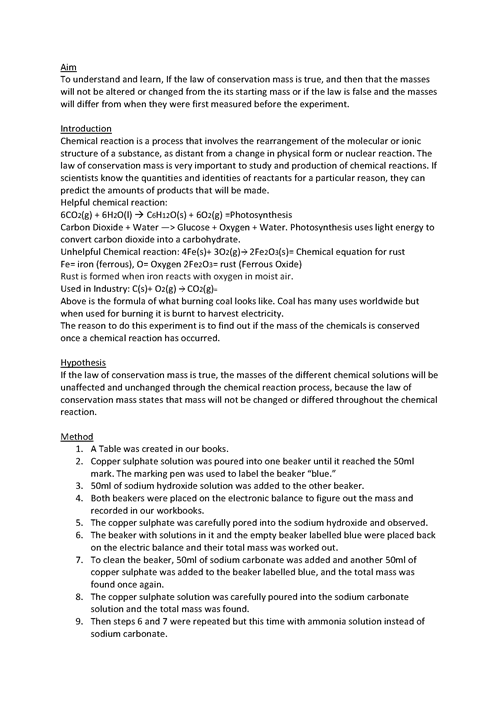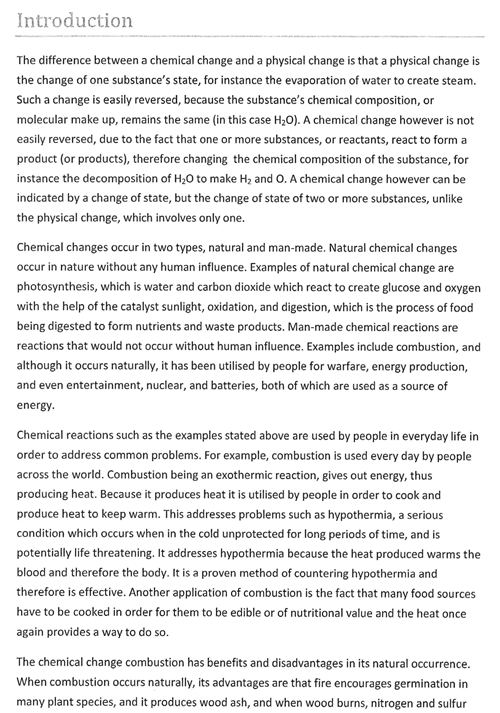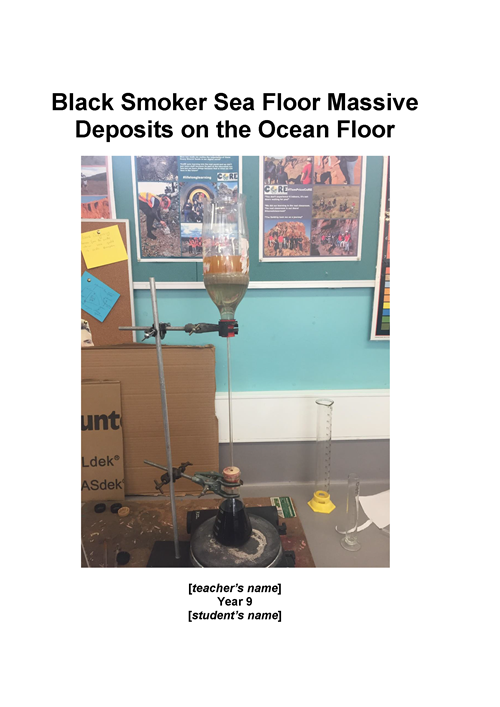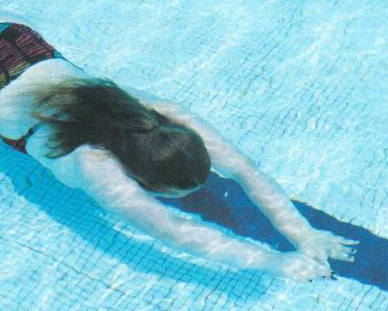Radioactivity and its application
Summary of task
In a teaching and learning unit on chemical sciences, students learnt the basic concepts and history of atomic theory, investigated different models of the structure of atoms, and learnt about isotopes and different forms of radioactive decay. They discussed the effects of radioactive radiation, explored different ways in which radioactivity is used in modern society and researched the use of radioactivity for medical applications.
In this task, students were asked to create a script for an episode of a science television show targeted at teenagers. The episode was meant to explain to viewers the basic concepts underlying the phenomenon of radioactivity. They were asked to describe one medical application of radioactivity with reference to its risks and benefits to patients. Students were to assume that the audience was not familiar with the topic and were asked to include a description of the basic structure of the atom and an explanation of the term ‘isotope’. Students were also asked to include a list of references they used to research the topic.
